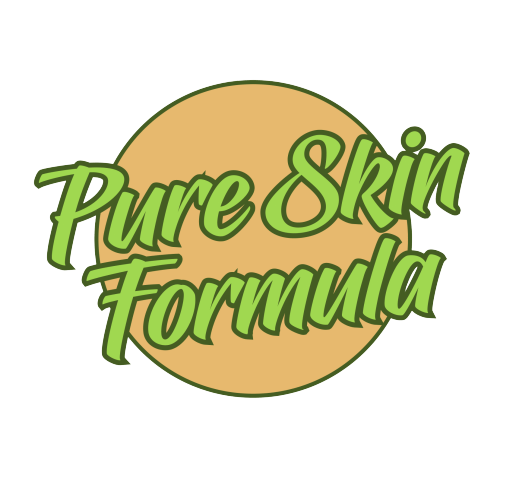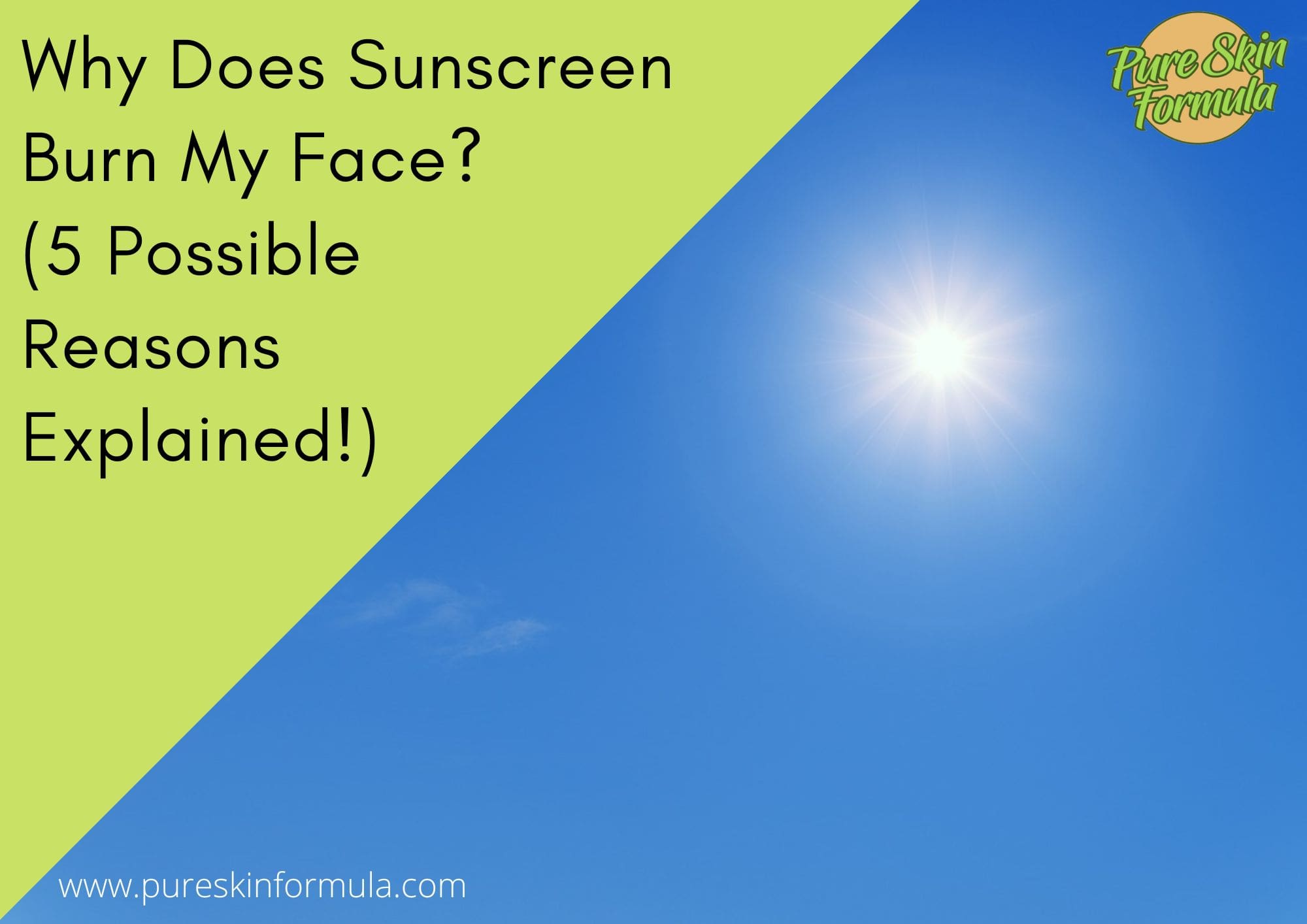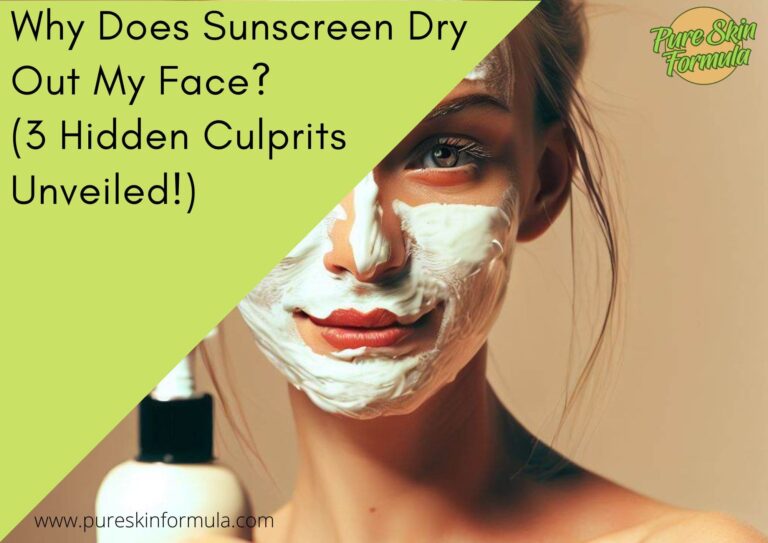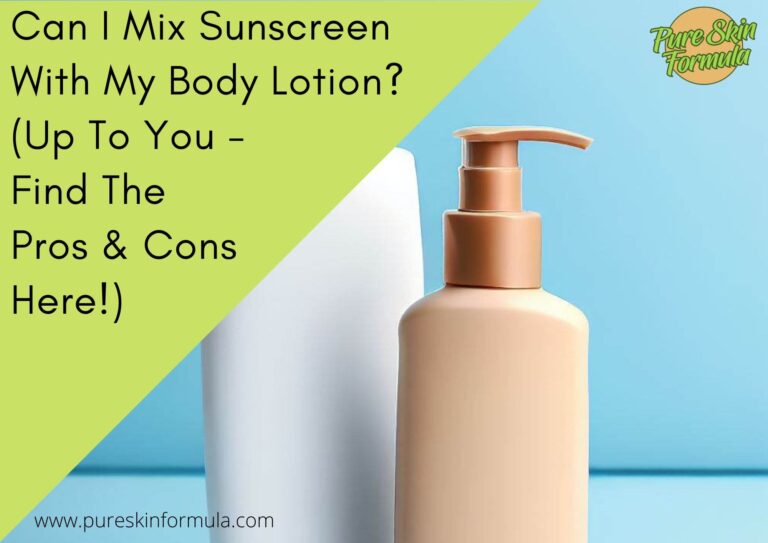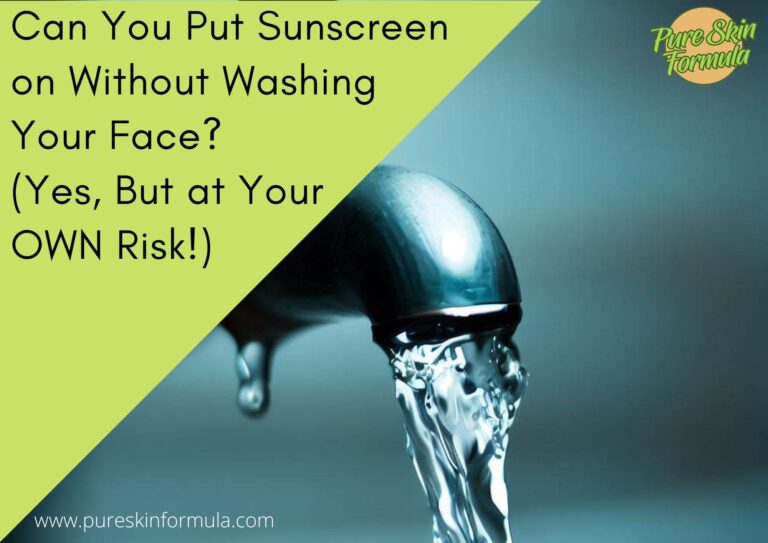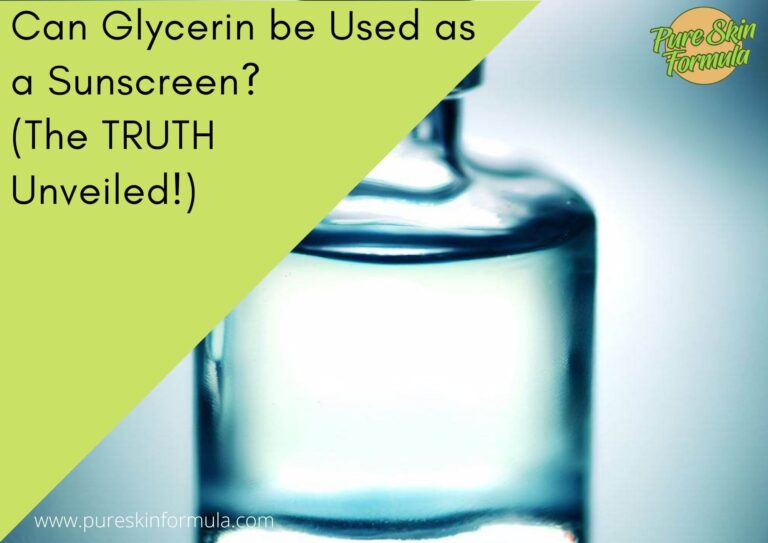Are you tired of applying sunscreen to your face only to feel a burning sensation? Do you find yourself avoiding sunscreen altogether because of the discomfort it causes?
If so, you’re not alone. Many people experience a burning or stinging sensation when applying sunscreen to their face, which can be frustrating and uncomfortable. But why does this happen?
Understanding the root cause of sunscreen burns is the first step in finding a solution. In this article, we’ll dive into the science behind why sunscreen can cause burning and irritation on the face, as well as common irritants and allergens to look out for.
Armed with this knowledge, you’ll be better equipped to choose a sunscreen that won’t cause discomfort and irritation on your face, allowing you to enjoy the benefits of sun protection without the unpleasant side effects.
Let’s start. I have explored five reasons why this might happen.
Why Does Sunscreen Burn My Face?
- Some chemical sunscreen ingredients can be irritants. Oxybenzone, avobenzone, and octinoxate can cause stinging, burning, and redness on the face. This is because they absorb the sun’s rays and convert them into heat, which can then irritate the skin.
- Ingredients in mineral sunscreens, such as zinc oxide and titanium dioxide, can also irritate if they need to be adequately formulated or are in high concentrations.
- You may be allergic to certain sunscreen ingredients. Common allergens found in sunscreens include fragrances, preservatives, and PABA. These allergens can cause various symptoms, including burning, itching, and facial redness.
- You may have sensitive skin, which can easily irritate by any sunscreen. This can be due to a weakened skin barrier, which allows irritants to penetrate more easily.
- You may misuse sunscreen. Whether using too much or expired, it might cause a burning sensation.
Let’s explore this further.
What is chemical sunscreen?
It absorbs the sun’s ultraviolet (UV) rays before penetrating the skin.
Chemical sunscreens contain organic compounds, such as oxybenzone, avobenzone, and octinoxate, that create a chemical reaction on the skin that absorbs UV radiation.
That is why you can find them as “organic” as well.
Chemical sunscreens typically provide broad-spectrum protection, protecting against UVA and UVB rays. They also tend to be lightweight and easy to apply, making them a popular choice for daily use.
However, some people may experience skin irritation or allergic reactions to the chemicals in chemical sunscreens.
Additionally, some of these chemicals have been found to affect the environment, particularly coral reefs, negatively.
What is physical sunscreen?
Physical sunscreen (also known as “mineral”) forms a protective barrier on the skin that reflects or scatters the sun’s UV rays.
Physical sunscreens contain inorganic minerals, such as zinc oxide and/or titanium dioxide, which act as physical blockers that prevent UV rays from penetrating the skin.

When applied to the skin, physical sunscreens create a layer that acts as a shield, effectively blocking UVA and UVB rays.
Physical sunscreens are generally considered gentler on the skin than chemical sunscreens and are often recommended for people with sensitive skin or allergies.
They are also considered reef-safe, as they do not contain chemicals harmful to marine life.
Same time, they may be more challenging to apply evenly, leaving a visible white cast on the skin.
Additionally, some people may find them heavier and greasy than chemical sunscreens.
It’s important to note that both chemical and physical sunscreens can provide adequate protection against the sun’s harmful rays, and the best sunscreen for you will depend on your individual needs and preferences.
What are the potential irritants found in chemical sunscreens?
Chemical sunscreens can contain a variety of ingredients that have the potential to irritate the skin or cause a burning sensation. Some of them are:
1. Oxybenzone is used in many chemical sunscreens to absorb UV rays. However, it has been known to cause skin irritation, and some studies have suggested that it may also negatively affect the environment.
2. Avobenzone: This is another chemical commonly used in sunscreens. While it is generally considered safe, some people may experience skin irritation or allergic reactions to this ingredient.
3. Octinoxate is used in chemical sunscreens to protect against UVB rays. However, it has been known to cause some people skin irritation and allergic reactions.
4. Some chemical sunscreens contain fragrances to make them more appealing, though they are sometimes skin irritating.
5. Preservatives, such as parabens or formaldehyde-releasing agents, can cause skin irritation or allergic reactions in some people.
What are the potential irritants found in physical sunscreens?
Physical (or mineral) sunscreens typically contain mineral ingredients such as zinc oxide and titanium dioxide, which are less likely to cause skin irritation than chemical sunscreen ingredients.

However, some people may still experience skin irritation or allergic reactions to these ingredients, particularly if they have sensitive skin or the sunscreen is not formulated correctly.
Some potential irritants found in physical sunscreens include:
1. Nanoparticles: Zinc oxide and titanium dioxide are naturally occurring minerals. Still, they can be ground down into tiny particles called nanoparticles to make them easier to apply and reduce the visible white cast left on the skin. However, some studies suggest nanoparticles may be more likely to penetrate the skin and cause irritation or other adverse effects.
2. Higher concentrations of minerals: Some physical sunscreens may contain higher concentrations, making them more effective at blocking UV rays and increasing the risk of skin irritation.
3. Like chemical sunscreens, physical sunscreens may contain other ingredients, such as fragrances or preservatives, that can cause skin irritation or allergic reactions in some people.
What to look for in sunscreen to avoid irritation?
If you have sensitive skin or are prone to skin irritation, there are several things to look for in sunscreen to minimize the risk of irritation:
Based on the above-mentioned info, consider using a mineral-based sunscreen that contains zinc oxide or titanium dioxide, as these ingredients are less likely to cause skin irritation than many chemical sunscreen ingredients.

Look for sunscreens that are labeled “fragrance-free” and “hypoallergenic.” The product has been formulated to minimize skin irritation and allergic reaction risk.
Choose a sunscreen labeled “non-comedogenic,” meaning it is less likely to clog pores and cause acne breakouts.
Choose a sunscreen that provides broad-spectrum protection and protects against UVA and UVB rays.
Consider using sunscreen with a lower SPF, as higher SPF sunscreens can irritate the skin. An SPF of 30 is generally considered sufficient for daily use.
Before using a new sunscreen on your face, do a patch test on a small area of your skin to check for any adverse reactions.
How to make the patch test?
Pick a small, discreet area of skin, such as the inside of your forearm or behind your ear, to patch test the sunscreen. Avoid areas of skin that are already irritated or sensitive.
Apply a small amount to the test area and rub it in gently. It’s essential to use the same amount of sunscreen you would use on your face.

Wait 24-48 hours to see if any reaction occurs. Look for redness, itching, swelling, or any other signs of irritation.
If you plan to use other skincare (e.g. moisturizer) or makeup products with sunscreen, repeat the patch test with those products to ensure no reaction.
If you have a history of allergic reactions or sensitivity to certain ingredients, check the sunscreen ingredient list before patch testing or using it on your face.
Remember, even if a patch test shows no adverse reaction, it’s still possible to experience irritation or an allergic reaction when using sunscreen on your face.
If you experience redness, itching, or other signs of irritation, discontinue using the product and consult a dermatologist to determine the best course of action.
To wrap it up
Overall, sunscreen burning your face can be caused by various factors, including irritating ingredients, skin sensitivities, and a weakened skin barrier.
Choosing the right sunscreen and being aware of potential irritants can protect your skin without experiencing discomfort.
Choosing the right sunscreen for your skin type and needs is essential to avoid sunscreen burning your face.
Look for sunscreens labeled as “hypoallergenic” or “non-comedogenic,” meaning they are less likely to cause irritation or clog pores.
You can also test a small amount of sunscreen to see if you have any adverse reactions before applying it to your face.
Thank you for reading!
Valeria
